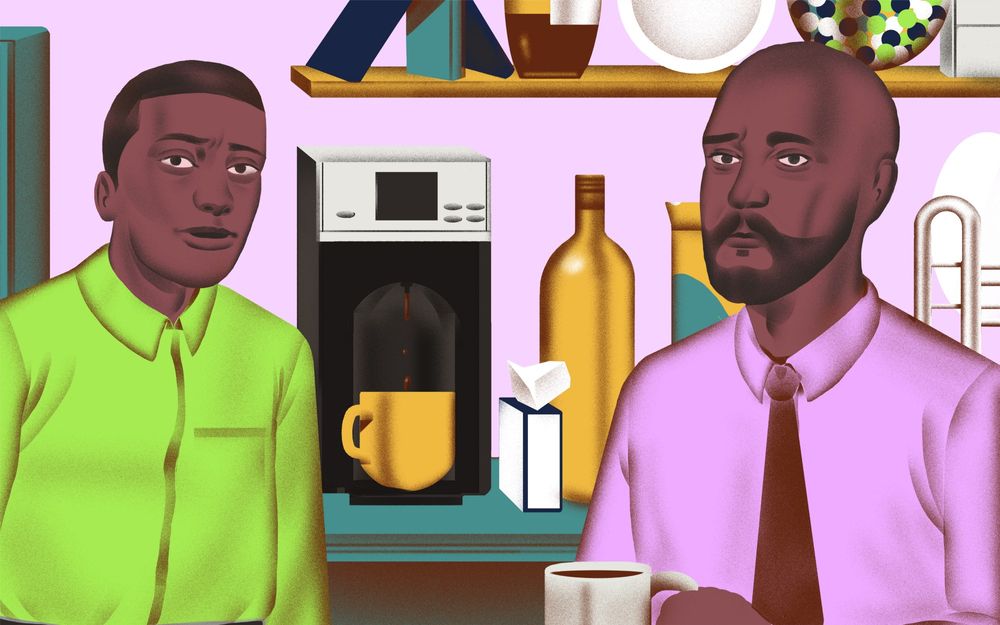I’ve never been one to make my presence immediately known at a new job. I’ll usually spend a couple of weeks scoping out the scene, getting a feel for the office culture, and figuring out how to seamlessly integrate myself into the team — a team that, at least in my professional experience, is predominantly White. That was the case in my last job, the bro-y internet startup, and I still remember my early days there.
The first thing I noticed was how quiet the office was. Nearly everyone wore headphones at their desks, and Slack was the go-to mode of communication, even if you were within arm’s reach of the person you needed, so the sound of keyboards typing filled the open space. But I got some actual week-one face time with my co-workers during an in-office mixer. Everyone was friendly enough, but I really wanted to chop it up with Mike — other than me, he was the only other Black dude on the staff.
It’s rare that I’d see other Black folks working at tech companies in Seattle, so I was excited to link with him; I was kind of hoping we’d hit it off and become work homies. But when Mike and I finally got to chat, the convo was cursory, even a little dry. We traded notes on past jobs and discussed company culture a bit. The only moment that went beyond surface-level talk is when we discovered that we both grew up in Lakewood, a small city outside of Tacoma. Our overlap there was brief, but meeting another Black person who’s also lived in that small-ass town is about as common as spotting a bodega in Seattle.
When you’re the only person of a particular race or background at work, certain anxieties arise; I can imagine that another set of insecurities comes into play when you’re relieved of that burden.
After that initial interaction, Mike and I would chat every now and then: elevator pleasantries, small talk in the kitchen while making coffee, shit like that. I never really got the vibe that we’d go beyond being acquaintances, which was a shame because it would’ve been great to have someone to commiserate about my odd encounters with some of my non-POC co-workers. But hey, all good — I knew what it was like being there to clock in, get my shit done, and clock out, so more power to the guy.
Still, I couldn’t help but wonder whether we truly didn’t mesh, or if there were other dynamics at play.
When you’re the only person of a particular race or background at work, certain anxieties arise; I can imagine that another set of insecurities comes into play when you’re relieved of that burden. How do you know whether you can trust this new person, if you’d like to be associated, or if you even have a similar outlook on things? It can be weird, but I didn’t take our failure to connect personally or think about it too much.
After just a few months at the job, Mike accepted a job offer elsewhere and I claimed an all-too-familiar role as the token Black guy. Whoop-de-fucking-doo. Fortunately, that didn’t last too long. Around my six-month mark at the company, I got an email from our head of HR. The company had recently implemented a buddy system as part of employee orientation, pairing new hires with veteran team members who would show them the ropes, address any questions or concerns they might have, and generally make their transition onto the team as smooth as possible. I’d been asked to pair up with one of the incoming recruits, Jamal. I already know what you’re thinking, and the answer is yes: Jamal, like me, is a marketer.
He’s also a Black man, which was just hilarious. Of course HR would match me up with their latest diversity hire — the jokes just write themselves, folks — but, hey, I get it. And regardless of whether it was harmless discrimination, I was just glad to look out for someone who looks like me.
Jamal and I grabbed lunch during his first week and spoke about everything from career history to hobbies to his Muslim faith. He even told me about his side hustle: building bots to buy up concert tickets or sneakers, particularly the ones that usually sell out within seconds. He offered to help me cop some Yeezys that were dropping that weekend — nice gesture, but I passed. It was the complete inverse of my experience with Mike, who was standoffish by comparison and seemed a little bummed by my presence. Jamal and I got pretty tight, and even kicked it outside of work a few times. He put me on to Seattle’s Black in Tech events and we’d eventually share stories about encounters with Shereene and the flaws of the company’s performance review system.
There’s a lot of talk about the importance of diversity in the workplace from a company’s perspective: A mix of different voices and viewpoints will ultimately yield better work. But working with other Black people helped me to realize its utility on the employee level. It’s great to feel like there are other people with a similar story or life experience in the same space, regardless of whether you bond with them beyond a superficial level.
Fortunately, at my current job, two of my co-workers are Black. While there should probably be more, that bit of diversity goes a long way in cultivating a feeling of comfort, support, understanding, and trust. We’ve got our own little clique — even if we primarily congregate on Slack — and despite representing a small percentage of the overall personnel, I can certainly feel our presence. It’s good to have some bruhs among the bros.
